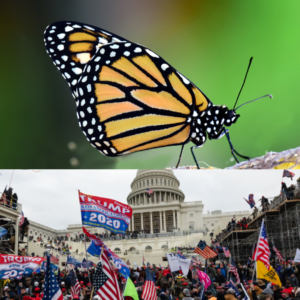Part 3 of a 10-part Series:
The Powell Memo Let Loose
“All for ourselves, and nothing for other people, seems in every age of the world, to have been the vile maxim of the masters of mankind.”
Adam Smith, 1776
The wealthy, business elites and the corporatocracy took the advice from Powell’s memo and ran with it. The most obvious strategy was to exert influence in the places of power—where decisions that affect all of us are made. One way was through direct contributions to political candidates. Here in the United States, campaign finance reform (i.e., getting “big money” out of politics) has undergone a cycle of incremental improvements followed by regression. This is due to both the practical need for large amounts of money in order to run for office as well as limits imposed by Constitutional free speech jurisprudence. Since the disastrous Supreme Court decision in Citizens United v FEC (2010), the amount of money already pouring into political campaigns has grown ever larger. Political committees may now accept unlimited contributions, so long as they do not “coordinate” with a candidate or a party. Although many of the fat cat donors have a political party preference, many of the special interest groups donate large sums to both parties—insuring access and influence regardless of what the people decide about who is elected.
Even prior to Citizens United, the Supreme Court eliminated the Millionaires Amendment in the 2008 Davis v FEC decision. The Millionaires amendment had allowed candidates running against an über-wealthy, self-funded opponent to bypass campaign contribution limits. Although the Millionaires Amendment imposed no limit on a wealthy candidate’s ability to spend funds on his own campaign, the Court’s rationale was that the Millionaires Amendment unconstitutionally “penalized” wealthy candidates; that such burden was not justified by any governmental interest in preventing corruption or the appearance of corruption; and that equalizing electoral opportunities for candidates of different personal wealth was not a permissible Congressional purpose.
According to the FEC, the largest individual donors to Republicans in the 2020 election were Sheldon Adelson ($225 million), Richard Uhlein ($75 million), Kenneth Griffin ($70 million), Timothy Mellon ($60 million) and Dustin Moskovitz ($50 million). The two largest donors to Democrats—Michael Bloomberg ($150 million) and Thomas Steyer ($80 million)—were running for President themselves, so a large part of their donations was likely made to their own campaigns. The Adelson-backed super-PAC decided to support Trump late in the campaign, which likely contributed to Trump’s upset victory. Thus illustrating yet more evidence of a “pay-to-play” political system.
Interest groups as well as wealthy individuals donate to political campaigns. One might think that these interest groups—who operate from individual donations and pooled funds—would likely be more representative of “the people.” Yet, here again, we see that many of these groups either represent business interests (e.g., the Chamber of Commerce), or are “astroturf” organizations which appear to be supported by grass roots small donations, but are actually funded by wealthy (and often anonymous) donors:
- U.S. Chamber of Commerce $130 million
- Crossroads GPS $110 million
- Americans for Prosperity $59 million
- National Rifle Association $58 million
- American Future Fund $51 million
